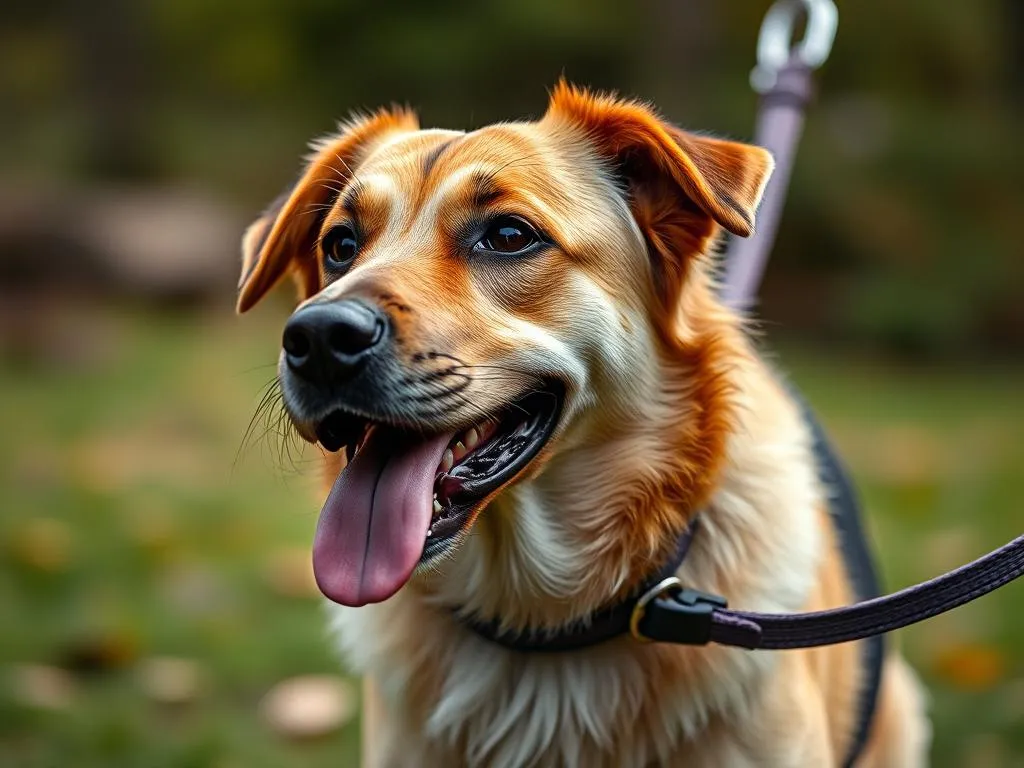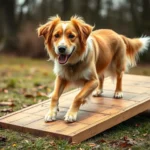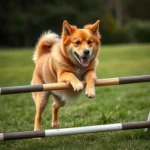
Introduction
Dog training is a fundamental aspect of responsible pet ownership, contributing significantly to a dog’s behavior, safety, and overall well-being. Training your dog not only helps in managing their behavior but also enhances the bond between you and your furry friend. Among various training methods, loose leash dog training stands out as a critical skill that every dog owner should prioritize.
Mastering loose leash training can lead to a more enjoyable walk for both you and your dog. It reduces common issues such as pulling, lunging, and general misbehavior on the leash, ensuring that outings remain pleasant and stress-free. This guide aims to provide you with a comprehensive understanding of loose leash dog training, from the basics to advanced techniques, equipping you with the knowledge to succeed.
Understanding Loose Leash Training
Definition of Loose Leash Training
Loose leash dog training refers to the practice of teaching your dog to walk calmly beside you without pulling on the leash. This means that there should be some slack in the leash at all times, allowing for a comfortable and controlled walking experience. The primary goal is to encourage your dog to stay close, pay attention, and respond to your cues during walks.
The Psychology Behind Leash Pulling
Understanding why dogs pull on the leash is essential for effective training. Dogs may pull for several reasons, including:
- Instinctual Behavior: Dogs have a natural instinct to explore their environment, and pulling may stem from their desire to chase after scents or sights.
- Lack of Training: Without proper guidance, dogs may not understand the expected behavior during walks.
- Excitement: Some dogs are simply excited to be outdoors and may pull out of sheer enthusiasm.
Recognizing these underlying reasons can help you tailor your training approach to address your dog’s specific needs.
Preparing for Loose Leash Training
Choosing the Right Equipment
The right equipment is crucial for effective loose leash dog training. Here are some essentials:
- Collars: A flat collar or a martingale collar can be suitable for many dogs. However, if your dog tends to pull excessively, a front-clip harness may offer more control and discourage pulling.
- Leashes: A sturdy, standard leash (6 feet in length) is ideal for training. Avoid retractable leashes, as they can encourage pulling and make control difficult.
- Training Tools: Consider using treats, clickers, and toys as rewards during training sessions.
Setting Up a Training Environment
Choosing the right location for training sessions can make a significant difference. Seek out quiet areas with minimal distractions, such as your backyard or a less busy park. Start training during times when your dog is calm and focused, ensuring that sessions are brief (5-10 minutes) to maintain their interest.
Step-by-Step Guide to Loose Leash Training
Step 1: Teaching the ‘Heel’ Command
The first step in loose leash dog training is teaching your dog the ‘heel’ command. This command instructs your dog to walk beside you rather than ahead.
- Introduce the Command: Begin in a quiet space with your dog on a leash. Hold a treat in your hand and encourage your dog to come to your side.
- Use a Cue: Once your dog is by your side, say “heel” and reward them with the treat. Repeat this process until your dog associates the command with the desired position.
Step 2: Using Positive Reinforcement
Positive reinforcement is a powerful tool in dog training. Rewarding your dog for desired behaviors will encourage them to repeat those behaviors in the future.
- Types of Rewards: Use treats, verbal praise, or favorite toys as rewards. Find what motivates your dog the most.
- Timing: Be sure to reward immediately when your dog walks beside you. This helps them understand which behavior is being rewarded.
Step 3: Practicing Attention and Focus
Maintaining your dog’s focus is crucial during walks. Engage in exercises that promote attention.
- Attention Exercises: Practice “look at me” commands, rewarding your dog for making eye contact with you. This helps reinforce that you are the primary focus during walks.
- Redirecting Attention: If your dog becomes distracted, gently redirect their attention back to you using treats or toys.
Step 4: Gradual Distance and Distraction Training
As your dog becomes more comfortable with the loose leash concept, introduce various distractions gradually.
- Start Small: Begin with minimal distractions, like a quiet street, and gradually add more challenging environments, such as parks with other dogs and people.
- Maintain Control: Practice maintaining a loose leash in these various settings. If your dog starts to pull, stop walking until they return to a loose leash position.
Step 5: Consistency and Patience
Consistency is key in any dog training regimen. Use the same commands and cues throughout your training sessions.
- Stay Patient: Understand that setbacks are a normal part of the training process. Celebrate small victories and remain patient as your dog learns.
Common Challenges and Solutions
Dealing with Distractions
Distractions can derail your loose leash dog training efforts. Here are tips to help you manage them:
- Avoid Overwhelming Situations: If your dog struggles with distractions, choose training locations where distractions are minimal.
- Gradual Exposure: Slowly expose your dog to more distractions as they become more proficient in loose leash walking.
Addressing Fear and Anxiety
Fear and anxiety can lead to undesirable behaviors, including pulling. Recognizing these signs is crucial.
- Signs of Fear: Look for signs such as cowering, tail tucking, or excessive barking. If your dog exhibits these behaviors, it’s essential to take a step back in your training.
- Building Confidence: Use gradual exposure techniques and positive reinforcement to build your dog’s confidence in various environments.
Handling Excitement and Overexcitement
Some dogs become overly excited during walks, leading to pulling and erratic behavior.
- Calming Techniques: Practice calming exercises, such as sit and stay, before heading out for a walk. This can help set a calmer tone for your outing.
- Shorter Walks: If your dog tends to get overly excited, consider shorter walks to help them manage their energy levels.
Advanced Techniques
Using Clicker Training
Clicker training can be a beneficial tool in loose leash dog training.
- Clicker Basics: A clicker is a small device that makes a distinct sound when pressed. It serves as a marker for good behavior.
- Incorporating Clicker Training: Use the clicker to mark the moment your dog walks beside you on a loose leash. Follow up with a reward immediately after clicking.
Different Methods of Loose Leash Walking
Various training methods can be effective for teaching loose leash walking. Here are a couple of popular approaches:
- Stop-and-Go Method: Whenever your dog pulls, stop walking. Wait until they return to a loose leash before continuing. This teaches them that pulling does not lead to forward movement.
- U-Turn Method: If your dog starts to pull, make a quick turn in the opposite direction. This unexpected movement encourages your dog to pay attention to you.
Experiment with these methods to find what works best for your dog. Adapt your approach based on their behavior and responsiveness.
Maintaining Loose Leash Walking Skills
Establishing a Routine
Regular practice is essential for maintaining loose leash walking skills. Incorporate training sessions into your daily routine, ensuring that both you and your dog stay engaged.
- Daily Walks: Aim for daily walks where you practice the techniques you’ve learned, even if it’s just for a short period each day.
- Variety in Locations: Mix up the environments where you train to keep your dog mentally stimulated.
Monitoring Progress
Tracking your dog’s progress can help you assess their improvements and stay motivated.
- Assess Improvements: Pay attention to your dog’s responsiveness to commands and their ability to maintain a loose leash.
- Set Milestones: Create achievable milestones to work towards, such as walking a certain distance without pulling or navigating more challenging environments.
Conclusion
In summary, loose leash dog training is an invaluable skill that enhances the walking experience for both you and your dog. Through understanding the psychology behind leash pulling, preparing adequately, and following a structured training guide, you can achieve success in this essential aspect of dog training.
Remember, training is not just about teaching commands; it’s about building a stronger bond with your furry friend. Celebrate your progress, be patient with setbacks, and most importantly, enjoy the journey of training together. Start your loose leash training today, and watch as your walks transform into enjoyable adventures filled with connection and joy.
FAQs
Common Questions About Loose Leash Training
What if my dog doesn’t respond to commands?
If your dog struggles to respond, consider using higher-value rewards or reducing distractions during training sessions.
How long will it take to train my dog?
The time it takes can vary widely based on your dog’s temperament and past experiences. Consistent practice will yield the best results.
Can I train an older dog to walk on a loose leash?
Absolutely! Dogs of all ages can learn new behaviors. It may take a bit more time, but patience and consistency are key.
What should I do if my dog barks at other dogs while on a leash?
Redirect your dog’s attention with treats or toys before they react. Gradually expose them to other dogs in controlled environments to help them learn appropriate behavior.









